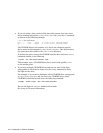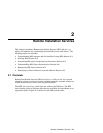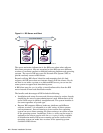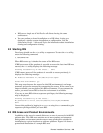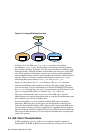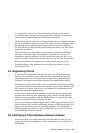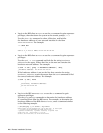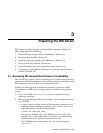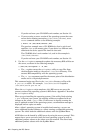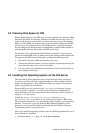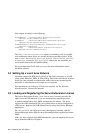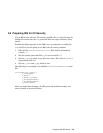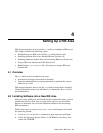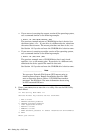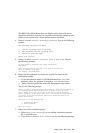If you do not know your CD−ROM’s unit number, see Section 1.3.
• If you are using a newer version of the operating system that uses
newer device naming conventions (
/dev/disk/cdromNc), use a
mount command similar to the following example:
# mount -rd /dev/disk/cdrom0c /mnt
The previous example uses a CD−ROM drive that is unit 0 and
specifies /mnt as the mount point; if your drive is a different unit,
substitute the device special file name for that unit.
The CD-ROM drive’s unit number is 0, and in this example is
/dev/disk/cdrom0c.
If you do not know your CD−ROM’s unit number, see Section 1.3.
3. Use the utilupdate command to update the necessary RIS utilities on
the server, as shown in the following example:
# /mnt/isl/utilupdate -r -m /mnt
• The -r option causes the utilupdate utility to copy files from
the distribution media to the server’s /usr/sbin directory. This
ensures RIS compatibility with the operating system.
• The -m /mnt argument specifies the mount point of the distribution
media and is a required parameter.
This command copies any files in the /usr/sbin directory to files with
a .pre-V5.1A suffix. For example: /usr/sbin/setld is copied to
/usr/sbin/setld.pre-V5.1A.
When the utilupdate script completes, this RIS server can serve the
current version of the operating system to RIS clients. Appendix C describes
the utilupdate utility.
When you are installing the operating system, if the utility finds existing
*.pre-V files on your system, the existing utilities are updated with no
changes to the saved *.pre-V files. If the server is already running the
new or updated version of the operating system, a confirmation message is
displayed and no copies are made.
After a client’s operating system is installed and running, a server can
serve additional product subsets to a client running a compatible operating
system. The client loads the additional subsets with the SysMan Menu.
A RIS client can be booted by a RIS server by using the BOOTP protocol. This
means that a server can serve both the base operating system as well as
additional product subsets to the client over the network. The client loads
additional product subsets with the SysMan Menu.
3–2 Preparing the RIS Server



